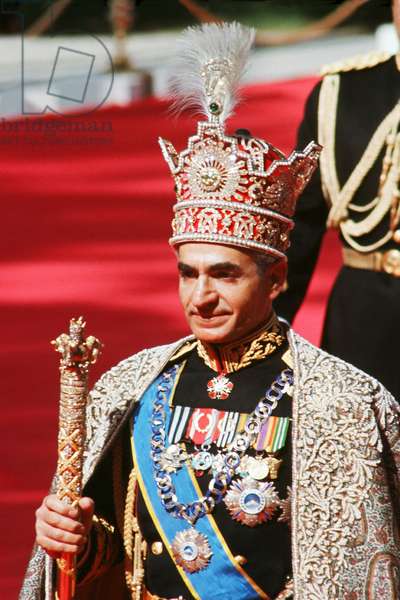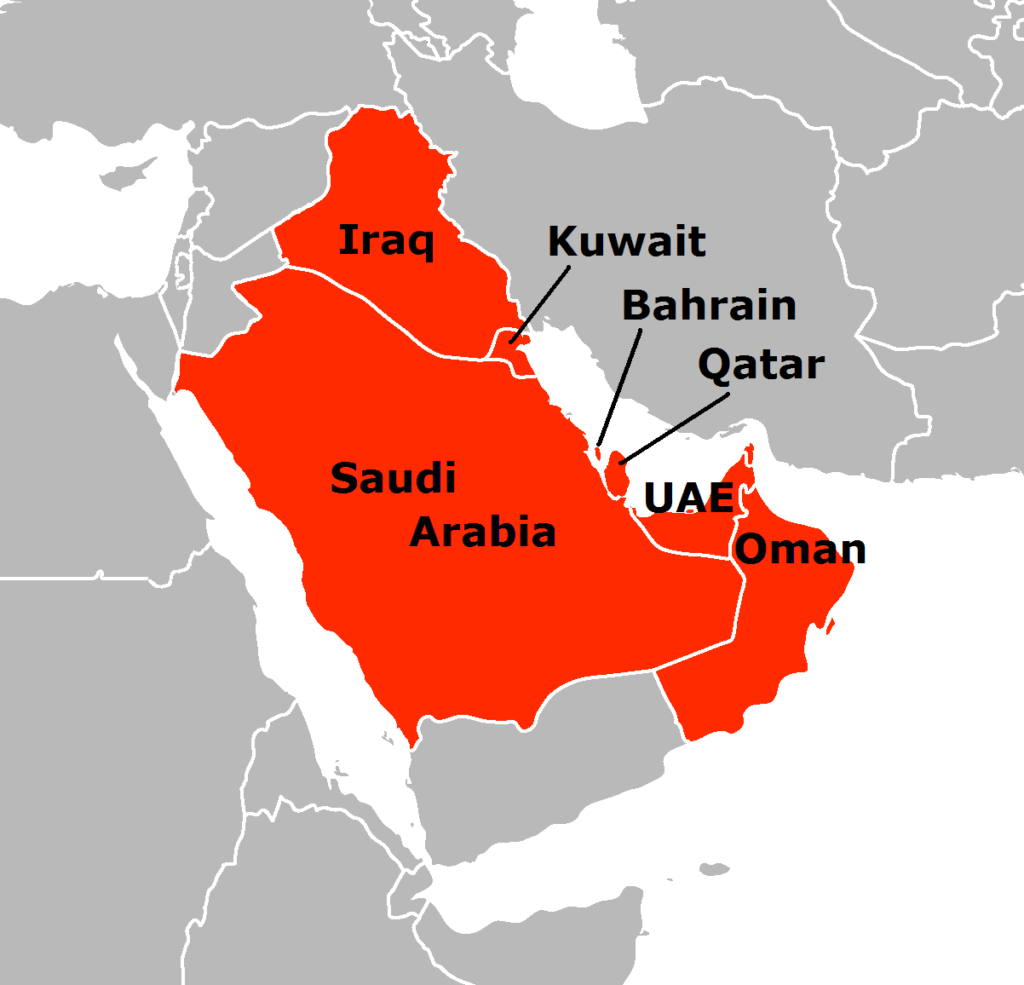In our previous piece, we examined how Reza Shah destroyed Iran. In this piece, we put his son Mohammad Reza Shah under the microscope. We do so because, to understand the Iran of 2022, we have to make sense of its tortured past.
Currently, Iran is ruled by mullahs. Iran’s theocratic regime is disliked, if not despised, by the US and its allies. Many, including prominent Iranians, blame the mullahs for all of Iran’s ills. However, few are aware of an inconvenient truth. It was the British who paved the path to power for the mullahs with the Americans constructing the mile.
Over the years, the mullahs have faced many protests. In the current wave, protesters have attacked government officials such as the police, ambulance attendants and bank officials. They have also targeted mosques, clerics and religious people. Many protesters chant “marq bar dictaator,” a phrase that literally translates as “death to the dictator.” Some of them have a soft spot for Mohammad Reza Shah whom we will subsequently refer to as the Shah.
Sadly, the Shah so beloved by some Iranians was an oppressive dictator. His secret police SAVAK kept an eye on the people. Hence, a famous proverb was born: divar mush dare, musham gush dare — the wall has a mouse, the mouse has ears. Under the Shah, Iran was a surveillance state much like the Soviet Union and East Germany. If you said the wrong thing to the wrong people, SAVAK would throw you into prisons like Evin and Qasr. You also faced the risk of torture and murder. After all, the US had taught SAVAK the tricks of the trade.
Young women who wish for a return to the halcyon days of absolute monarchical rule do not know that the Shah was deeply sexist. He believed that women were less intelligent than men. In his interview with Italian journalist Oriana Fallaci, the Shah remarked, “You may be equal in the eyes of the law, but not, I beg your pardon for saying so, in ability.” Hence, it is unsurprising that the Shah objectified women and saw them purely through the lens of sexual pleasure.
A Classic Comprador
When the Portuguese pioneered European colonization of the colored peoples, a term came into being. A comprador or compradore came to signify a “person who acts as an agent for foreign organizations engaged in investment, trade, or economic or political exploitation.” The Shah was a comprador who ruled Iran first as a British vassal and then as an American one.
The circumstances of the Shah’s accession to the throne are most instructive. The British deposed Reza Shah for cozying up with the Germans in 1941. After sending the father packing, they placed the weak, callow 22-year-old son on the throne. They chose the young Shah precisely because they were convinced that he would do their bidding.
The Shah proved to be a good pick. The British and the Soviets occupied Iran. The British used Iran’s north-south railroad to supply the Soviets against Germany. In 1942, both promised that they would withdraw their forces within six months of the end of the war. This promise was intended to appease Iranian nationalists. In 1943, American troops arrived in Iran too. When the war ended, the Soviets troops failed to leave the country as per their promise. Only American pressure made them leave by May 1946. Iranians were appreciative of American commitment to the integrity of Iran and its right to self-determination.
Foreign occupation fuelled national pride and democratic discourse in Iran. Once foreign troops left, this continued. While foreign troops left, foreign influence did not stop. The British continued to extract and export oil from Iran for a pittance. They treated Iran as a de facto colony and the Shah acted as their comprador.
Naturally, dissent emerged. Mohammad Mosaddegh emerged as the key leader. Reza Shah had put him under house arrest. Once the bloodthirsty ruler was deposed in 1941, Mosaddegh returned to public life and was elected to parliament. Protests in 1949 against fake elections led to the founding of Jebhe Melli, which literally translates as National Front. As its leader, Mosaddegh promised to end the British control of Iran’s oil industry. He demanded that the British share profits equally with Iran. At the time, the Anglo-Iranian Oil Company (AIOC) was paying more money to Britain as taxes than to Iran as a share of the proceeds.
The British opposed Mosaddegh tooth and nail. They refused to share profits equally with the Iranians, claiming it would be a breach of contract. The very British idea of duress invalidating a contract did not apply to Iran. The Iranians had signed a deal that gave them 17.5% of AIOC’s profits when the British held a gun to their head. The AIOC cooked its books and Iran never really got the promised 17.5% either.
The Dirty Secrets About How Reza Shah Destroyed Iran
In late December 1950, the American-owned Arabian American Oil Company (Aramco) agreed to share profits with Saudi Arabia on a 50-50 basis. The British rejected the idea of any similar agreement for AIOC with Iran. This left the Iranian parliament with no choice but to pass a bill nationalizing the oil industry in March 1951. The Shah did not sign the bill. Mosaddegh was elected prime minister in April and the Shah was now forced to sign the nationalization bill.
The British responded by manipulating the Americans to conduct a military coup in 1953. The Cold War was on and the Americans were turning paranoid about communism. Nationalization allowed the British to paint Mosaddegh as a potential Soviet ally. Like a wily old uncle manipulating a sinewy nephew, the British got the Americans to do their dirty work for them. Mosaddegh was packed off to prison and the Shah emerged as an absolute ruler just like his father.
Until the 1953 coup, the Shah had one master: the British. From now on, he had two masters: the British and the US. As the American star rose, they came to dominate Iran. The British debacle in the 1956 Suez Crisis strengthened the American hand. As part of the Cold War, the US began beefing up the Shah’s regime. Washington provided the regime with military advisers, intelligence agents, and arms and ammunition worth millions of dollars. The Iranian taxpayer paid for such help most generously. American oil companies got a share of the Iranian oil pie.
The Shah’s Oppressive Police State
After 1953, life in Iran deteriorated. For Washington, the Shah was a key Cold War ally. Iran was a frontline state against the Soviet Union. So, in 1957, CIA and FBI helped the Shah’s regime to set up the dreaded Sazman-e Etelaat Va Amniat Keshvar (SAVAK), a secret police to cow his people into submission. The US and, later, Israel coached Iranian military, police and intelligence officials in the arts of surveillance, coercion and torture.
By 1960, the Shah had a vise-like grip on the country. He had eliminated, imprisoned, and silenced the opposition. Nobody dared to protest. SAVAK routinely scrutinized students, civil service employees and industrial workers. It censored and controlled all forms of media and professional associations. SAVAK also monitored Iranian communities abroad. It had over 5,000 full-time employees and many part-time agents around the world. SAVAK used all forms of torture necessary to extract information and punish dissenters. Nobody felt safe in Iran.
Such was the brutality of SAVAK that American public opinion began to turn. The US put pressure on the Shah to reform. In 1963, the Shah announced a plebiscite for an ambitious program of social, political and economic reform that has come to be known as the White Revolution. The most important element of this revolution was land reform. He broke down large land holdings to give away land to poor cultivators. In theory, this sounds like a good egalitarian measure. In reality, it led to disaster.
Poor cultivators did not have money to run their small farms. The government gave them land but did not give them farming implements, seeds, fertilizers, irrigation and funds. Unsurprisingly, they abandoned their farms to become landless laborers in cities, particularly Tehran. The urban population exploded and, in due course, so did discontent.
It was in 1963 that the then relatively obscure Ruhollah Musavi Khomeini spoke out against the White Revolution. Khomeini was teaching at the prestigious Fayẕiyyeh Madrasah in Qom. He was already a prominent ayatollah. The Shah arrested Khomeini and killed many students at Fayẕiyyeh. Luckily for Khomeini, the Shah did not kill him or confine him to an Iranian prison. In 1964, Khomeini publicly criticized the Shah for awarding the US capitulation and called him a lackey of US and Israel. The Shah first arrested Khomeini but, after 19 days in Qasr and a another few days in a military base, packed off the ayatollah into exile who ended up living in Turkey, Iraq, and, eventually, France.
Extravagant Opulence by Foreign Lackey
When the Shah was not oppressing his people, torturing dissidents or locking up his opponents, he was lavishly blowing up Iranian tax money on obscenely extravagant events. In 1967, the Shah crowned himself in an occasion that still lives on in Iranian memory. This American lackey assumed the resonant but meaningless title, “His Imperial Majesty The Shāhanshāh of Iran,” and wore a crown that was studded with a mere 3,380 diamonds. He gave his wife Farah the title, “the Empress of Iran,” an unprecedented act in Iranian 2,500-year history.

In most monarchies, coronation is held soon after the king or queen ascends to the throne, as the coronation of Charles II in the UK demonstrates. In the case of Iran, the coronation ceremony was a reflection of the Shah’s perverted narcissism. He wanted the world to see him as a secular reformer, a great modernizer, a savior of an ancient civilization, the resuscitator of ancient Persia and a historic emperor beloved by his people. Four years later, he threw what has come to be known as “the world’s greatest party” to celebrate 2,500 years of Iranian monarchy.
In 1971, the Shah held this party in the ancient ruins of Persepolis, which now lies in the middle of a desert. An airport, a highway and an entire tent city were built for the occasion. This “billion-dollar party” has come to be known as “the Devil’s Feast.” As his people toiled in poverty, the Shah and his foreign guests were quaffing the fanciest of champagnes and gorging on caviar.
Many kings and queens, presidents and prime ministers were impressed by this ostentatious desert party. However, canny observers were not entirely convinced. The most memorable of these was US diplomat George Ball who attended this party and saw the spectacle of the crowning of the “Sun of the Aryans.” His words sum up this 1971 incongruous big bash:
“What an absurd, bathetic spectacle! The son of a colonel in a Persian Cossack regiment play-acting as the emperor of a country with an average per capita income of $250 per year, proclaiming his achievements in modernizing his nation while accoutred in the raiment and symbols of ancient despotism.”
While the Shah was good at throwing lavish parties, he was not as savvy at retaining Iranian territory. Bahrain had been overwhelmingly Shia and was under Iranian suzerainty before the British took over. The British were supposed to return this island to Iran. Instead, the British pressured the Shah to let Bahrain become an independent state in 1970. They had installed a comprador Wahhabi Sunni dynasty just as they had installed the Pahlavis in Iran. This Wahhabi dynasty still rules over Bahraini Shias with an iron hand.

While the Shah projected himself as a mighty emperor, in reality, he was the gendarme of the Persian Gulf for Uncle Sam. The US relied on Iran as its leading security partner in the Gulf. Iranian oil revenues were spent to protect American interests in the region. The Shah also supported the US in the Vietnam War.
A Sordid and Dissolute Despot
Today, many Iranians see the Shah as a liberator of women. During his time, glamorous women in elegant dresses sashayed down his red carpets. This is in stark contrast to the current regime of mullahs that imposes draconian dress codes on women. The nostalgia for the more permissive pre-1979 era obscures the fact that the Shah did not really see women as equals. He made his wife regent but did not think she would be able to rule as well as him.
The Shah led a famously dissolute life, visiting nightclubs across Europe and chasing beautiful actresses. One of them was Grace Kelly who became the Princess Grace of Monaco in 1956. The Shah spent millions on Kelly. He gifted her “three pieces of Van Cleef & Arpels jewelry: a gold birdcage housing a diamond and sapphire bird, all fashioned into a perfect pin; a gold vanity case with a clasp set with thirty-two diamonds; and a gold bracelet with an intricate pearl and diamond face.” He gifted others ancient jewelry from the treasury. Tragically, the poor, toiling Iranian taxpayers funded this libertine lifestyle. They also paid for the Shah’s gambling addiction. This magnificent emperor often lost about 50 million tomans ($42 million) in a single night as peasants went hungry in his homeland.
More importantly, the Shah was the Harvey Weinstein of his day. In fact, he was much worse than Weinstein. Not only pimps but also government officials were supposed to procure beautiful women for the Shah. Some of these women were underaged. The Shah was a serial sexual offender who preyed on vulnerable women and got away with it.
Given the Shah’s lack of loyalty to his nation, his excessive ostentation, brutal oppression and moral turpitude, a revolution was inevitable. Monarchs cannot eat cakes forever when their people struggle for bread. Even though SAVAK had imprisoned, tortured or killed opposition leaders like Mosaddegh, the Iranian people were seething in rage against their “Playboy Shah.” Iranians revolted in 1979, exactly 190 years after the 1789 French Revolution. Once the dust settled, the mullahs led by Khomeini took charge.
Today, the Shah’s eldest son Reza lives in the US and continues the family tradition. Reza dreams of the restoration of the Pahlavi dynasty and a return to good times for his family. He has been financed not only by the CIA but also the Saudis. Like his grandfather and father, Reza is also a lackey. The apple has not fallen far from the tree.
Today, people are out on the streets protesting against the mullahs who run a theological state. Most of them are very young with some barely 15. Some of them are vulnerable to myths about a glorious past and look favorably upon the Shah. Even in 2022, there are Iranians who glorify and glamorize the Shah. They must remember that he was a corrupt tyrant who stole from his people, gave territories away, helped foreigners destroy Iranian democracy, killed innocents and sexually abused innumerable women. The Shah belongs to the dustbin of history. Iran’s future has to be about liberty, equality, human rights, freedom and democracy.
[The authors corrected and updated this article on November 9, 2022.]
The views expressed in this article are the author’s own and do not necessarily reflect Fair Observer’s editorial policy.
Support Fair Observer
We rely on your support for our independence, diversity and quality.
For more than 10 years, Fair Observer has been free, fair and independent. No billionaire owns us, no advertisers control us. We are a reader-supported nonprofit. Unlike many other publications, we keep our content free for readers regardless of where they live or whether they can afford to pay. We have no paywalls and no ads.
In the post-truth era of fake news, echo chambers and filter bubbles, we publish a plurality of perspectives from around the world. Anyone can publish with us, but everyone goes through a rigorous editorial process. So, you get fact-checked, well-reasoned content instead of noise.
We publish 3,000+ voices from 90+ countries. We also conduct education and training programs
on subjects ranging from digital media and journalism to writing and critical thinking. This
doesn’t come cheap. Servers, editors, trainers and web developers cost
money.
Please consider supporting us on a regular basis as a recurring donor or a
sustaining member.
Will you support FO’s journalism?
We rely on your support for our independence, diversity and quality.








Comment